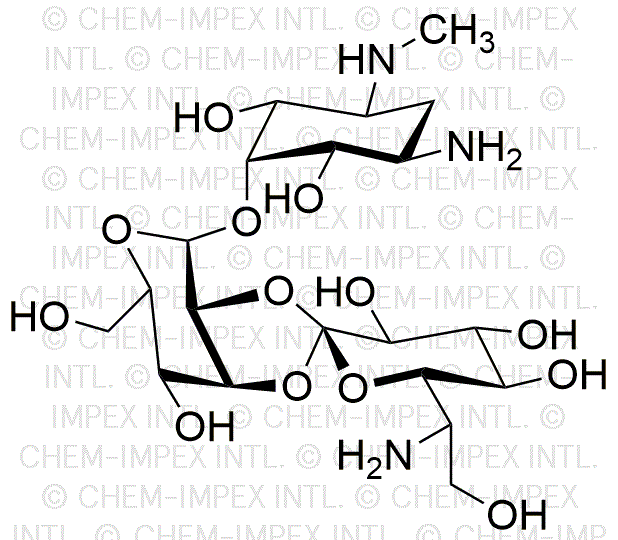Hygromycin B from Streptomyces hygroscopicus powder is widely utilized in research focused on:
- Antibiotic Research: It serves as a potent antibiotic, particularly effective against a range of Gram-negative bacteria, making it invaluable in microbiological studies and antibiotic resistance research.
- Cell Culture Applications: Researchers use it as a selective agent in cell culture to maintain and select genetically modified cells, ensuring that only those expressing the hygromycin resistance gene survive.
- Gene Expression Studies: It aids in the study of gene expression by allowing scientists to create stable cell lines that express specific genes, facilitating the investigation of gene function and regulation.
- Plant Transformation: In plant biotechnology, hygromycin B is employed as a selection marker in the transformation of plants, helping researchers to identify successfully transformed plants in genetic engineering projects.
- Pharmaceutical Development: It is used in the development of new antibiotics and therapeutic agents, providing a basis for testing the efficacy of new compounds against resistant bacterial strains.
General Information
Properties
Safety and Regulations
Applications
Hygromycin B from Streptomyces hygroscopicus powder is widely utilized in research focused on:
- Antibiotic Research: It serves as a potent antibiotic, particularly effective against a range of Gram-negative bacteria, making it invaluable in microbiological studies and antibiotic resistance research.
- Cell Culture Applications: Researchers use it as a selective agent in cell culture to maintain and select genetically modified cells, ensuring that only those expressing the hygromycin resistance gene survive.
- Gene Expression Studies: It aids in the study of gene expression by allowing scientists to create stable cell lines that express specific genes, facilitating the investigation of gene function and regulation.
- Plant Transformation: In plant biotechnology, hygromycin B is employed as a selection marker in the transformation of plants, helping researchers to identify successfully transformed plants in genetic engineering projects.
- Pharmaceutical Development: It is used in the development of new antibiotics and therapeutic agents, providing a basis for testing the efficacy of new compounds against resistant bacterial strains.
Documents
Safety Data Sheets (SDS)
The SDS provides comprehensive safety information on handling, storage, and disposal of the product.
Product Specification (PS)
The PS provides a comprehensive breakdown of the product’s properties, including chemical composition, physical state, purity, and storage requirements. It also details acceptable quality ranges and the product's intended applications.
Certificates of Analysis (COA)
Search for Certificates of Analysis (COA) by entering the products Lot Number. Lot and Batch Numbers can be found on a product’s label following the words ‘Lot’ or ‘Batch’.
*Catalog Number
*Lot Number
Certificates Of Origin (COO)
This COO confirms the country where the product was manufactured, and also details the materials and components used in it and whether it is derived from natural, synthetic, or other specific sources. This certificate may be required for customs, trade, and regulatory compliance.
*Catalog Number
*Lot Number
Safety Data Sheets (SDS)
The SDS provides comprehensive safety information on handling, storage, and disposal of the product.
DownloadProduct Specification (PS)
The PS provides a comprehensive breakdown of the product’s properties, including chemical composition, physical state, purity, and storage requirements. It also details acceptable quality ranges and the product's intended applications.
DownloadCertificates of Analysis (COA)
Search for Certificates of Analysis (COA) by entering the products Lot Number. Lot and Batch Numbers can be found on a product’s label following the words ‘Lot’ or ‘Batch’.
*Catalog Number
*Lot Number
Certificates Of Origin (COO)
This COO confirms the country where the product was manufactured, and also details the materials and components used in it and whether it is derived from natural, synthetic, or other specific sources. This certificate may be required for customs, trade, and regulatory compliance.


